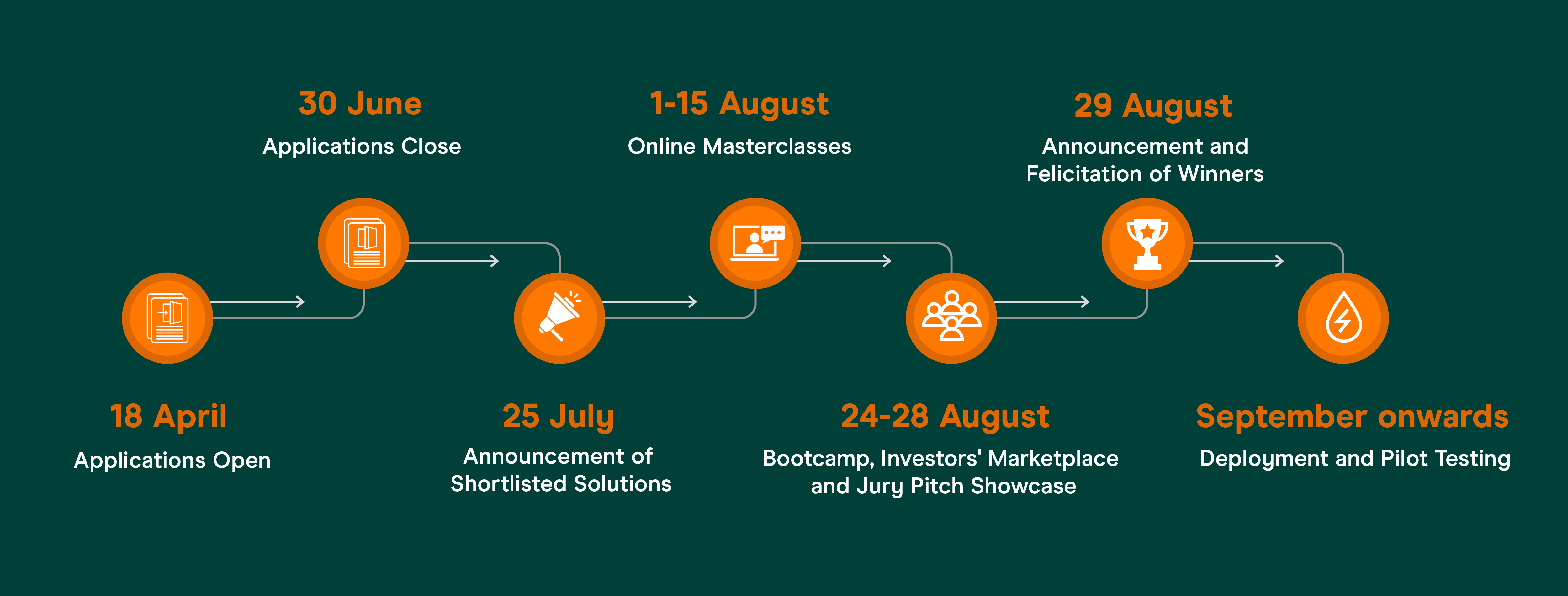Strengthening the Grid for a Resilient Future!
Problem Statement 1
Develop an AI-powered tool to analyze behind-the-meter (BTM) energy consumption patterns and create digital twins of appliances.
Read more
The solution could include:
- Insights to help utilities identify inefficiencies, enhance demand-side management and improve demand flexibility
- Infrastructure upgrade requirements prediction – especially for emerging technologies such as EVs – ensuring alignment of grid investments with real consumption data
Problem Statement 2
Develop an AI-powered tool to analyze consumption patterns from existing smart meter data and identify large-scale flexible assets & operational inefficiencies in industrial settings.
Read more
The solution could include:
- Implementation (data integration, AI analysis, program design, and deployment)
- Cost-effectiveness assessment (savings vs. traditional methods)
- Evaluation, measurement, and verification (performance monitoring and adjustment)
Eligibility Criteria
- Stage of Development: You must have at least a working prototype or pilot-ready solution.
- Revenue/sustainability model: You must have experience with fundraising, preferably equivalent to ~100k USD or above, with a proven revenue or sustainability model in place
- Sector Relevance: The solution must address either or both focus areas within climate infrastructure.
- Scalability & Innovation: The solution should have the potential for replication and scale across India (and potentially in other emerging markets) and it must show clear innovation
- Geographic Presence: Your firm must be based in India or have operations in India are strongly encouraged to apply
- Team & Commitment: You must have a core team with complementary technical, business, and operational skills in place, with at least one full-time founder.
- Inclusion & Diversity Commitment: Women-led or gender-diverse teams are strongly encouraged to apply
Evaluation Criteria
Innovation & Technical Feasibility (35%)
Assessment of the solution’s underlying AI and data architecture, its technical robustness, scalability, and adaptability across varied systems and setups. Emphasis is placed on the originality and innovative edge of the solution in comparison to existing alternatives in the market.
Market Potential & Traction (20%)
Evaluation of the solution’s relevance to clearly defined market segments, the level of traction achieved (including pilots, customer adoption, or partnerships), and the demonstrated potential for large-scale market uptake.
Cost-Effectiveness & Impact (10%)
Consideration of the estimated deployment cost and comparative advantage over traditional or alternative methods. This includes the solution’s projected or demonstrated impact in terms of energy savings, operational efficiency, or emissions reductions.
User-Centric Design & Compatibility (20%)
How user-friendly and intuitive the solution is for different types of end-users. Also assessed is its compatibility with existing devices, platforms, or infrastructure to ensure ease of integration and adoption.
Team, Partnerships & Sustainability (15%)
Analysis of the team’s capabilities, experience, and readiness to execute. Includes evaluation of strategic or implementation partnerships, and the strength of the business or sustainability model in supporting long-term scalability and impact.

